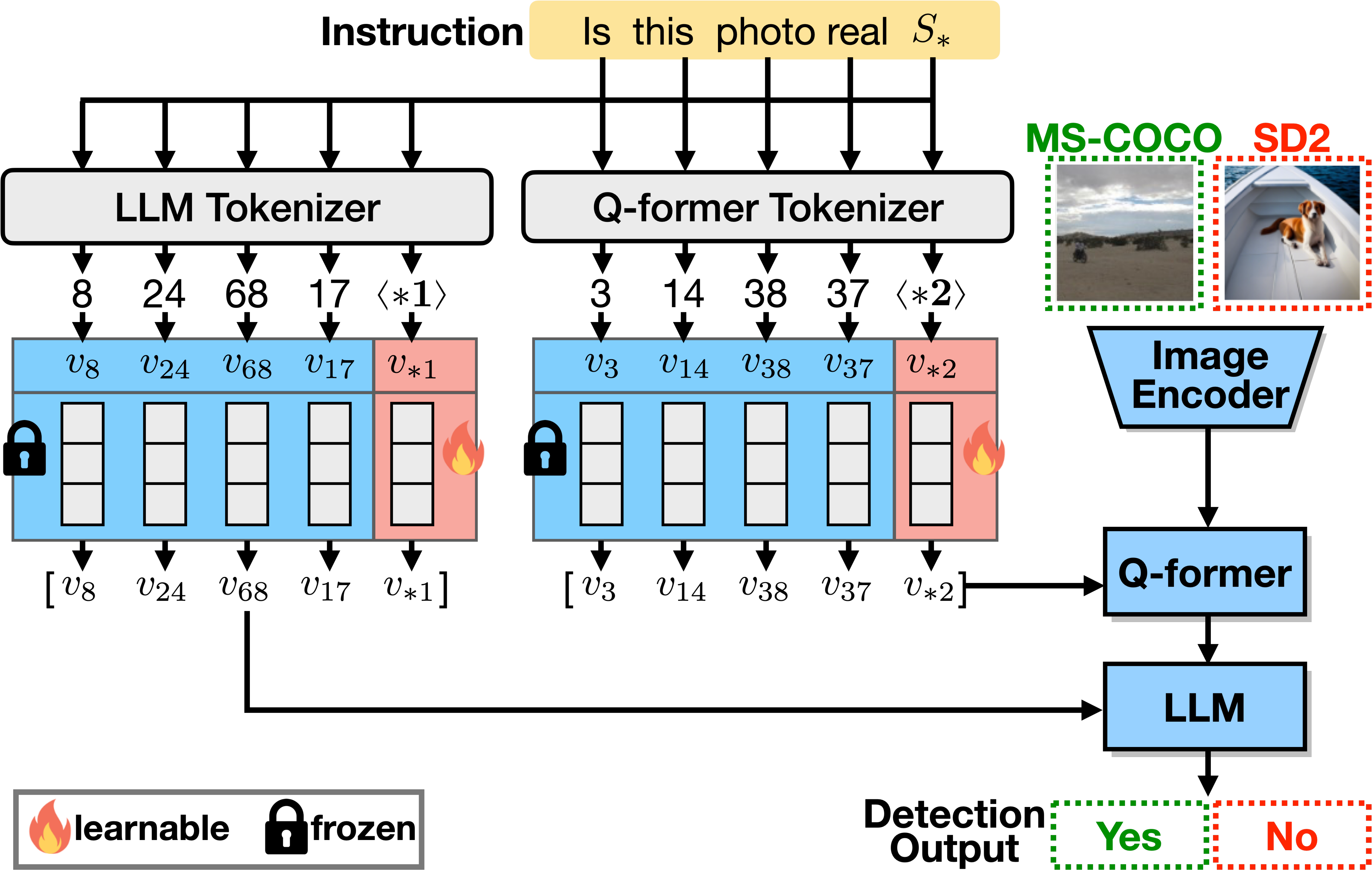AntifakePrompt: Prompt-Tuned Vision-Language Models are Fake Image Detectors
Deep generative models can create remarkably photorealistic fake images while raising concerns about misinformation and copyright infringement, known as deepfake threats. Deepfake detection technique is developed to distinguish between real and fake images, where the existing methods typically train classifiers in the image domain or various feature domains. However, the generalizability of deepfake detection against emerging and more advanced generative models remains challenging. In this paper, inspired by the zero-shot advantages of Vision-Language Models (VLMs), we propose a novel approach using VLMs (e.g. InstructBLIP) and prompt tuning techniques to improve the deepfake detection accuracy over unseen data. We formulate deepfake detection as a visual question answering problem, and tune soft prompts for InstructBLIP to distinguish a query image is real or fake. We conduct full-spectrum experiments on datasets from 3 held-in and 13 held-out generative models, covering modern text-to-image generation, image editing and image attacks. Results demonstrate that (1) the deepfake detection accuracy can be significantly and consistently improved (from 54.6% to 91.31%, in average accuracy over unseen data) using pretrained vision-language models with prompt tuning; (2) our superior performance is at less cost of trainable parameters, resulting in an effective and efficient solution for deepfake detection. Code and models can be found at https://github.com/nctu-eva-lab/AntifakePrompt.
PDF Abstract







 ImageNet
ImageNet
 MS COCO
MS COCO
 Visual Question Answering
Visual Question Answering
 LSUN
LSUN
 Flickr30k
Flickr30k
 TextVQA
TextVQA